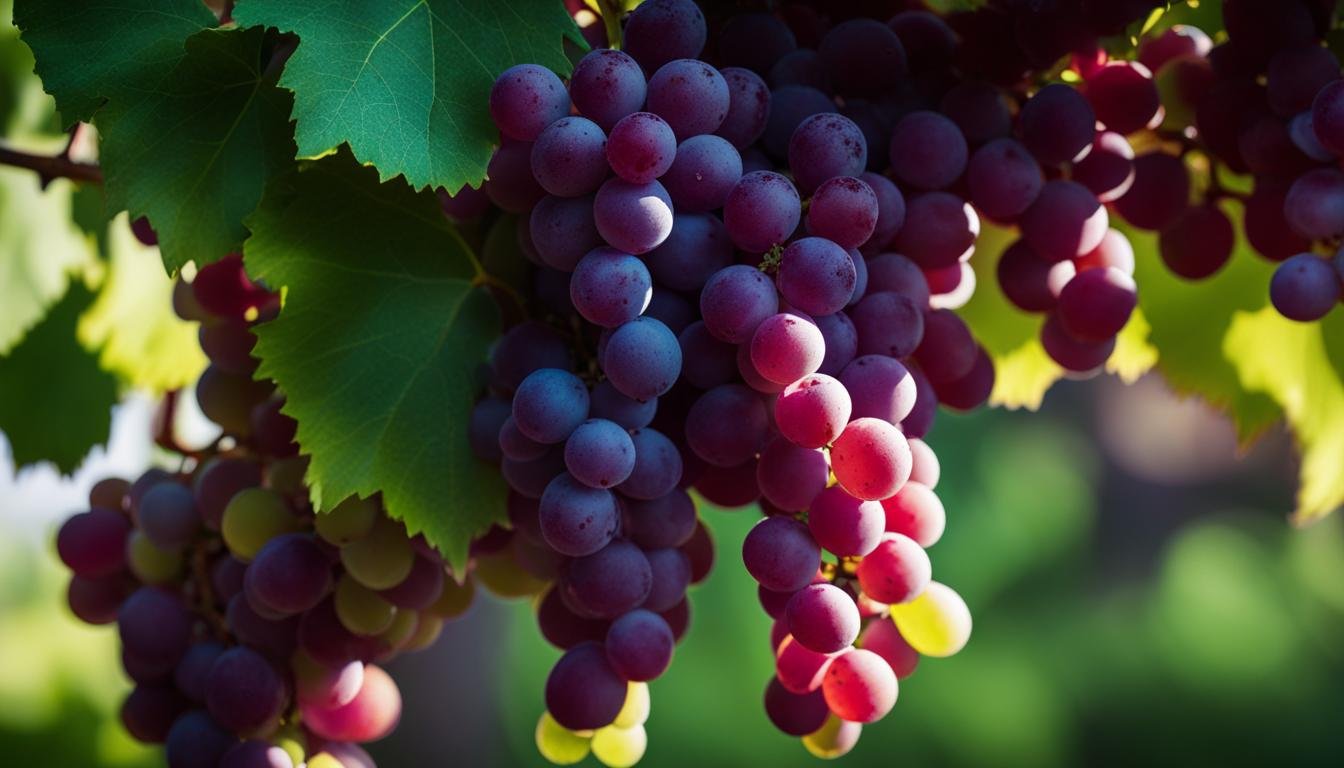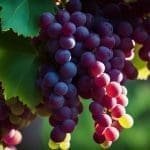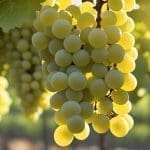This post may contain affiliate links. Please read my disclosure policy.
Carignan: The Rustic Revivalist of the Vineyard
Introduction
Carignan, pronounced “Kari-nyan,” is like the rugged character actor who’s finally getting lead roles. Once overlooked, it’s now gaining acclaim for its contribution to some robust and characterful wines. Originating from Spain and widely planted in the Languedoc-Roussillon region of France, Carignan is known for its deep colour, high acidity, and firm tannins. Let’s explore Carignan – a grape variety that combines rustic charm with surprising complexity.
Primary Flavours
A journey with Carignan is an exploration of rich, earthy flavours. It boasts a palette of ripe red fruits like raspberry and plum, coupled with spicy notes and a hint of herbaceousness. There’s a certain wildness to Carignan, reflecting its traditional Mediterranean roots.
Taste Profile
| Carignan | ||
|---|---|---|
| Aspect | Rating out of 5 | Characteristic |
| Sweetness | 🍷 | Predominantly dry, with an earthy whisper of fruit |
| Body | 🍷🍷🍷🍷 | Full-bodied, as robust as a seasoned sailor |
| Tannins | 🍷🍷🍷🍷 | Strong and hearty, like a firm handshake |
| Acidity | 🍷🍷🍷 | Notably high, adding a zestful spark to its depth |
| Alcohol by Volume | 🍷🍷🍷🍷 | Typically around 13-14.5%, as warming as a Mediterranean sun |
| Each wine glass icon 🍷 represents one point on a 5-point scale. Carignan is appreciated for its high acidity and tannins, which contribute to its aging potential and make it a valuable component in blends. It typically features flavors of dark fruits, spice, and a hint of earthiness, making it a favourite for those who enjoy robust wines. | Each wine glass icon 🍷 represents one point on a 5-point scale. Carignan is appreciated for its high acidity and tannins, which contribute to its aging potential and make it a valuable component in blends. It typically features flavors of dark fruits, spice, and a hint of earthiness, making it a favourite for those who enjoy robust wines. | Each wine glass icon 🍷 represents one point on a 5-point scale. Carignan is appreciated for its high acidity and tannins, which contribute to its aging potential and make it a valuable component in blends. It typically features flavors of dark fruits, spice, and a hint of earthiness, making it a favourite for those who enjoy robust wines. |
Growing Regions
Carignan is a staple in the vineyards of southern France, particularly in Languedoc-Roussillon, where it plays a crucial role in many blends. Its Spanish roots are evident in regions like Catalonia. The grape has also made a home in the New World, with notable plantings in California and Chile, where it’s gaining a reputation for producing single-varietal wines of high quality.
Origin and Winemaking
Carignan’s history is as deep and complex as its wines. Originally from Aragon in Spain, it was extensively planted in France for its ability to yield high quantities of fruit. Historically used as a blending grape, Carignan is experiencing a renaissance, with winemakers rediscovering its potential to create rich, flavourful, and age-worthy wines.
Serving Temperature
The ideal serving temperature for Carignan is around 15-18°C (59-64°F). This slightly cooler range for reds helps to showcase its vibrant acidity and fruit flavours, while keeping the tannins in check. Serving Carignan too warm may overemphasize its alcohol and tannins, whereas too cool a temperature might stifle its expressive aromatics. At this ideal serving range, the wine’s rustic charm and spirited fruit profile are elegantly highlighted, offering an engaging tasting experience.
Glassware
Selecting the right glassware is crucial to fully appreciating Carignan’s robust character. A large red wine glass, preferably one with a generous bowl, is ideal. This allows ample room for the wine to breathe, softening its tannins and intensifying the aromatic profile. The design of the glass should focus the wine’s rich, spicy, and fruity aromas, enhancing the overall sensory experience. In proper glassware, Carignan’s bold personality and Mediterranean heritage are proudly displayed, inviting a deeper exploration of its nuances.
Decanting
Decanting can be beneficial for Carignan, especially for younger or more tannic expressions. An hour of decanting helps to soften the wine’s robust tannins and open up its complex layers of flavour. This gentle aeration allows Carignan to fully express its rustic charm and varietal characteristics, making the tasting experience more harmonious and enjoyable.
Ageing
Carignan is a wine with excellent ageing potential. Over time, its high tannins and acidity mellow, and the wine develops softer, more nuanced flavours. With ageing, Carignan’s initially bold and rustic profile evolves into a more refined and complex expression, revealing secondary notes of earth, leather, and spice. While enjoyable in its youth, a well-aged Carignan is a testament to the grape’s versatility and depth, offering a rich and rewarding tasting journey.
Food Pairings
Carignan is a versatile companion at the dining table. Its robust structure and lively acidity make it a fantastic match for a range of hearty dishes. It pairs exceptionally well with grilled meats, game, and rich stews, where its tannins and acidity can cut through the richness of the food.
Mediterranean cuisine, with its emphasis on herbs and tomatoes, complements Carignan beautifully. For vegetarians, dishes like ratatouille, grilled vegetables, or lentil-based stews are excellent choices to pair with this wine’s earthy and spicy character.
Wine Labels
Exploring Carignan through various labels offers insights into its rustic yet refined character. Here’s a table showcasing some notable brands, each representing a unique expression of this versatile grape:
| Carignan | Carignan | Carignan |
|---|---|---|
| Country | Wine Label | Varietal Name & Style |
| France | Domaine de Fontsainte | Corbières Carignan - Rich, Complex |
| Spain | Celler de Capçanes | Montsant Carignan - Robust, Earthy |
| USA | Ridge Vineyards | California Carignan - Fruit-forward, Vibrant |
| Chile | De Martino | Maule Valley Carignan - Bold, Structured |
| France | Château Ollieux Romanis | Languedoc Carignan - Spicy, Full-bodied |
| Note: These brands reflect Carignan’s adaptability to different terroirs and winemaking styles, from traditional, earthy French expressions to the more fruit-driven styles of the New World. | Note: These brands reflect Carignan’s adaptability to different terroirs and winemaking styles, from traditional, earthy French expressions to the more fruit-driven styles of the New World. | Note: These brands reflect Carignan’s adaptability to different terroirs and winemaking styles, from traditional, earthy French expressions to the more fruit-driven styles of the New World. |
Conclusion
Carignan, once underrated, has emerged as a grape capable of producing wines with both rustic charm and sophisticated depth. Its journey from a blending grape to a varietal star is a story of transformation and rediscovery.
Whether savoured young or aged, Carignan offers a wine experience that is both hearty and refined, a testament to its enduring appeal and versatility.
What are some interesting facts about Carignan?
• Carignan is a red grape variety, originally from Spain, and widely planted in the Languedoc-Roussillon region of France.
• Known for producing high-tannin, acidic wines with robust flavours.
• Commonly used in blends to add structure and colour.
• Flavours often include dark fruits, spices, and hints of pepper.
Where does the name Carignan originate from?
The name “Carignan” likely originates from the town of Cariñena in Aragon, Spain, reflecting its Spanish heritage, although the grape has become closely associated with French viticulture.
To which wines is Carignan similar?
Carignan is similar to other robust red wines like Grenache and Mourvèdre, often blended together in the Rhône-style blends. These wines share characteristics of deep colour, high tannins, and pronounced fruit flavours.
Is Carignan known by any other names?
Carignan is known as Cariñena or Mazuelo in Spain, and as Carignane in the United States. These names vary by region but refer to the same grape variety.
Continue with reading a detailed article about Carignan here!
User Review
( votes)Sip smarter, subscribe now!
Subscribe for gourmet tips, event updates, travel ideas, and a free e-book on Food Pairings. Start your journey to culinary and travel excellence!













